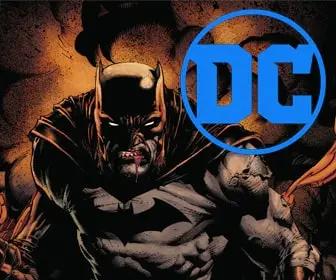
The CCA’s Grip: 1960s Comics Under Scrutiny

In the vibrant tapestry of comic book history, the Comics Code Authority (CCA) stands out as a pivotal player. Established in 1954, the CCA was a self-regulatory body created by the comic book industry in response to growing public concern over the content of comics and their potential influence on young readers. Its guidelines dictated what was acceptable in comic books, impacting everything from themes to language.
The 1960s, a decade marked by dynamic social change and the rise of counterculture movements, presented a unique backdrop for the CCA’s influence. It was a time when comics were evolving, both reflecting and shaping societal attitudes. In this period of transformation, the CCA played a crucial role in guiding the content and direction of comic books, shaping their storytelling and artistic expression for years to come.
The Comics Code Authority’s Influence on Content
The CCA’s guidelines were comprehensive, covering everything from the portrayal of violence and crime to the depiction of authority figures and romantic relationships. For example, crime had to be shown as a sordid and unpleasant activity, and villains could not be glamorous or occupy a position that would make crime seem attractive. These rules had a profound impact on the content of comic books in the 1960s.
Popular comics underwent significant changes to comply with the CCA. Horror and crime comics, which had been immensely popular, saw a decline as their themes often clashed with the CCA’s standards. Instead, superhero comics, with their clear distinction between good and evil, began to dominate the industry.
The impact on themes and narratives was evident. Topics considered controversial or adult-oriented, such as drug use, sexuality, and social unrest, were largely off-limits. This led to a sanitization of content, with stories often avoiding real-world issues and focusing on more fantastical and morally straightforward tales.
Shaping Storytelling and Artistic Expression
The CCA’s influence extended beyond the content of comic books to the very way stories were told and depicted. With strict guidelines in place, creators had to find innovative ways to engage readers while adhering to the rules. This led to a focus on more imaginative and fantastical elements, giving rise to the Golden Age of Superheroes. Iconic characters like Spider-Man, Batman, and Superman became household names, embodying clear moral values in line with the CCA’s standards.
The restrictions also had a noticeable effect on artistic styles. The depiction of violence was toned down, and artists had to employ creative methods to imply action without showing explicit scenes. This led to a more stylized form of expression, with an emphasis on dynamic poses and exaggerated expressions to convey emotion and intensity.
Furthermore, the decline of certain genres, such as horror and crime, due to CCA guidelines, pushed artists and writers to explore new themes and concepts within the superhero genre. This period saw the introduction of complex characters and intricate plots, laying the groundwork for the sophisticated storytelling seen in modern comics.
Resistance and Evolution in the 1960s
Despite the CCA’s tight grip on comic book content, the 1960s saw the emergence of resistance against its constraints. Underground comix, a new wave of comics that eschewed the CCA’s approval, began to surface. These comics, often self-published and distributed, tackled taboo subjects and explored themes of rebellion, social change, and personal freedom. Artists like Robert Crumb and Gilbert Shelton became pioneers of this movement, using their work to challenge societal norms and push the boundaries of comic book storytelling.
The mainstream comic book industry also experienced changes during this period. As the decade progressed, the CCA found itself under pressure to adapt to the shifting cultural landscape. In response, it revised its guidelines to allow for more mature content, including the depiction of social issues such as drug addiction and racial discrimination. This marked the beginning of a gradual loosening of restrictions, paving the way for a more diverse and nuanced range of stories in comic books.
The evolution of the CCA’s guidelines reflected a growing recognition of comics as a legitimate form of art and storytelling, capable of addressing complex themes and engaging with real-world issues. It signaled a shift in the perception of comic books, from simple children’s entertainment to a medium with the potential for profound artistic and social expression.
Collectors
Some of the early comics known to carry the CCA seal include:
- “Adventures of Rex the Wonder Dog” #20 (DC Comics, May-June 1955) – One of the earliest known comics to carry the CCA seal, featuring the adventures of a heroic German Shepherd.
- “Young Romance” #78 (Prize Comics, April 1955) – A romance comic that was among the first to display the CCA seal, signaling the Code’s influence on a variety of genres.
- “Blackhawk” #88 (Quality Comics, April 1955) – An action-adventure comic featuring a team of World War II aviators, known to be one of the early adopters of the CCA seal.
- “The Kilroys” #54 (American Comics Group, April-May 1955) – A humor and family life comic that was part of the initial wave of CCA-approved issues.
- “Crime Does Not Pay” #143 (Lev Gleason Publications, April 1955) – A crime comic that had to undergo significant changes to comply with the CCA guidelines and featured the seal in its later issues.
Denouement
The Comics Code Authority’s impact on the comic book industry is undeniable. While it initially served as a tool for censorship, it inadvertently sparked creativity and innovation within the constraints it imposed. The challenges faced by artists and writers led to the development of new storytelling techniques and the exploration of themes that resonated with readers.
As the decades passed, the CCA’s influence waned, and it was eventually disbanded in the 21st century. However, its legacy lives on in the way comic books are perceived and created. The era of the CCA contributed to the maturation of the medium, demonstrating that comics could be more than just entertainment for children. They could be a powerful form of expression, capable of reflecting and shaping the world around them.
Today, comic books enjoy a level of artistic freedom and respect that was hard to imagine during the height of the CCA’s power. The journey from strict censorship to creative liberation is a testament to the resilience and adaptability of the comic book industry.













